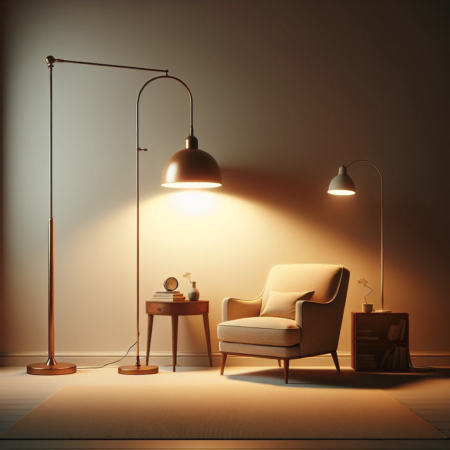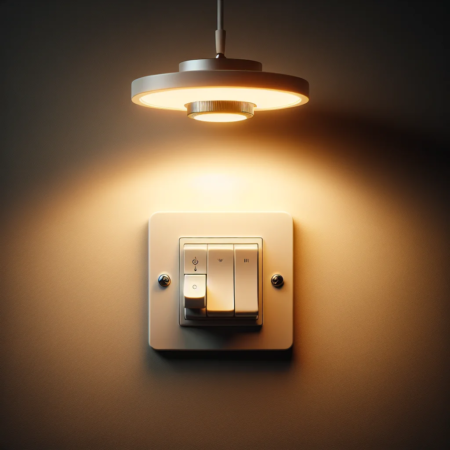Check out this Youtube video: “How To Add A New Light To An Existing Circuit – YouTube” for a helpful tutorial on adding additional ceiling lights to your home!

Contents
Factors to Consider Before Adding Additional Ceiling Lights
Before adding additional ceiling lights, it is crucial to assess the existing electrical system to ensure it can handle the increased load. Have you assessed the existing electrical system for capacity and circuit overload? Yes. Additionally, it is essential to choose the suitable type of ceiling light based on the room’s layout and purpose, and to consider the energy efficiency of the fixtures. Have you evaluated the room’s layout, purpose, and existing decor to make an informed choice? Yes. Lastly, meticulous consideration of the placement of the new lights is essential to achieve the desired illumination and aesthetic appeal, including assessing the ceiling’s structural integrity to support the chosen type of lighting arrangement. Have you considered the placement of the new lights to maximize their effect? Yes.
Assess the existing electrical system
Before adding additional ceiling lights, it is crucial to assess the existing electrical system to ensure it can handle the increased load. Start by checking the circuit’s capacity and ensuring there are no overloaded circuits.
If necessary, consider consulting a qualified electrician to evaluate the wiring and make any required upgrades to meet the demands of the new lighting fixtures.
Additionally, examine the current ceiling light fixture’s wiring configuration. Identify the number of wires, their colors, and their designated functions.
This assessment will provide essential insights into the compatibility of the new lighting installation with the existing electrical system.
Another critical aspect is to verify the proximity of the existing electrical system to the desired placement of the new lights. If the location is far from the current wiring, it might require additional electrical work to connect the new lights, increasing the complexity of the installation.
Determine the type of ceiling light to install
Choosing the suitable type of ceiling light is a pivotal decision when adding new fixtures. Consider various options such as chandeliers, pendant lights, track lights, or recessed lighting, based on the desired ambiance and functionality.
Each type of light offers unique characteristics that can enhance different areas of the room.
Evaluate the room’s layout, purpose, and existing decor to make an informed choice. For example, pendant lights may be ideal for accentuating specific areas, while recessed lighting can provide overall illumination without occupying visual space.
Moreover, consider energy-efficient options to minimize electricity consumption and contribute to a sustainable environment.
Furthermore, understanding the electrical requirements of different ceiling lights is essential. Some fixtures may require additional support or alterations to the electrical system, impacting the installation process.
Therefore, it’s vital to align the chosen ceiling light type with the existing electrical framework for seamless integration.
Consider the placement of the new lights
When adding additional ceiling lights, meticulous consideration of their placement is essential to achieve the desired illumination and aesthetic appeal. Analyze the room’s dimensions, architectural features, and furniture layout to determine the optimal placement for the new fixtures.
This includes assessing the ceiling’s structural integrity to support the chosen type of lighting arrangement.
Moreover, taking into account the primary purpose of the lights, such as ambient, task, or accent lighting, is crucial in determining their placement. For instance, task lighting near work areas or accent lighting to highlight specific features demand strategic positioning to maximize their effect.
Before adding additional ceiling lights, it is vital to thoroughly assess the existing electrical system, choose the appropriate type of ceiling light, and carefully consider the placement of the new lights to ensure a successful and safe installation process.
Step 1: Planning for the Installation
To plan for the installation, start by calculating the square footage of the room and evaluating the foot-candle requirements. Determine the total lumens needed by multiplying the square footage by the foot-candle requirement. Then, consider the size, style, and purpose of the lighting to choose the right fixtures for the space. Finally, map out the layout of the new lights by visualizing the areas that require lighting and the type of illumination needed, ensuring a well-balanced lighting layout that meets the functional and aesthetic needs of the space.
Calculating the number of lights needed
To calculate the number of lights needed for a space, it’s crucial to consider the room dimensions and the purpose of the lighting. Start by determining the square footage of the room.
For example, if the room is 12 feet by 10 feet, it has a square footage of 120 square feet. Next, evaluate the foot-candle requirements for the specific area.
Most living spaces typically require around 10-20 lumens per square foot. Using these requirements, calculate the total lumens needed by multiplying the square footage by the foot-candle requirement.
Choosing the right fixtures for the space
When selecting light fixtures, consider the size, style, and purpose of the lighting. Chandeliers, pendant lamps, and recessed lights are popular choices. Consider the height and placement of the fixture, ensuring it’s appropriately sized for the room and hung at the correct height. For instance, chandeliers and pendant lights should be positioned to provide adequate illumination without overwhelming the space.
Mapping out the layout of the new lights
Mapping out the layout of the new lights involves visualizing the areas that require lighting and the type of illumination needed. Consider the functional requirements for each area of the room (E.g., reading, cooking, or workspace).
This step helps in determining the kind of lighting required in each specific area. For example, task lighting for cooking and ambient lighting for relaxation areas.
Ensure a well-balanced lighting layout that meets the functional and aesthetic needs of the space.
Step 2: Preparing the Electrical System
To prepare the electrical system for installing additional ceiling lights, it is crucial to turn off the power to the specific circuit being worked on, ensuring safety during the installation process. This can be done by locating the main breaker in the service panel, flipping it to the off position, and confirming the power is off using a voltage tester. Additionally, running new cables to the desired locations and installing junction boxes for the new lights are essential steps for a secure and organized electrical system.
Turning off the power to the circuit
To ensure safety when installing additional ceiling lights, it is crucial to turn off the power to the specific circuit you will be working on. To do this, locate the main breaker in the service panel – it’s usually a double-width switch at the top.
Flip the main breaker to the off position to cut off power to the entire house. This extra precaution ensures a secure environment for the installation process, reducing any risk of electrocution or accidents while working with the electrical components.
Always confirm the power is off using a voltage tester before proceeding with any work to guarantee a safe and secure workspace.
Running new cables to the desired locations
When adding new ceiling lights, running new cables to the desired locations is essential. To begin, ensure that each cable is of adequate length and quality.
Proper cable management is crucial for successful installation – label every cable and use only high-quality cables and terminations. The main objective is to avoid overloading cable trays and to carefully lay the cables using the preferred method, either inside a cable raceway or directly on support structures.
This ensures a well-organized and secure electrical system, preventing potential hazards and simplifying any future maintenance or troubleshooting.
Installing junction boxes for the new lights
Junction boxes play a vital role in the installation of new lights and ensure a secure and organized system. To install a junction box, adhere to best practices such as mounting it securely to a stud using screws or nails.
It’s essential to position the box so that its face is flush with the drywall, providing a seamless and unobtrusive appearance once the lights are installed. Furthermore, when mounting and wiring the junction box, carefully twist together wires of the same color, a critical step that ensures proper connections and mitigates the risk of electrical faults or malfunctions.
By following these steps, you can guarantee a safe and efficient installation of additional ceiling lights.
Question: How to Install Additional Ceiling Lights?
To install additional ceiling lights, start by turning off the power at the circuit breaker, removing the existing fixture, and preparing the new fixture by attaching the crossbar and connecting the wires. Secure the new fixture in place and connect the wiring, making sure to follow the instructions provided. Finally, test the lights to ensure proper functionality before wrapping up the installation process.
Yes, the process involves turning off the power, attaching the new fixture, connecting the wiring, and testing the lights to ensure they work properly.
Step 3: Installing and Testing the New Ceiling Lights
After carefully selecting and purchasing the new ceiling lights, it’s time to move on to the thrilling task of installing and testing them. Let’s dive into the step-by-step process of attaching the light fixtures to the ceiling, connecting the wiring and securing the fixtures, and finally, testing the lights to ensure their proper functionality.
Attaching the Light Fixtures to the Ceiling
To begin, ensure the power to the existing light fixture is switched off at the circuit breaker. Next, remove the screws or nuts securing the current fixture’s canopy and gently lower it to expose the wiring and electrical box.
Following this, safely detach the wires of the existing light fixture from the electrical box, keeping track of which wire connects to which.
Now, it’s time to prepare the new light fixture. If it includes a crossbar, affix it to the electrical box using the screws provided.
Be sure it’s securely in place, as it will support the weight of the new light fixture. After this, connect the wires of the new fixture to the corresponding wires in the electrical box by twisting them together and securing with wire nuts.
Then, tuck the connected wires back into the electrical box and carefully mount the new fixture in place, securing it with the provided screws or nuts. Once securely fastened, attach the canopy to the light fixture.
Connecting the Wiring and Securing the Fixtures
Following the attachment of the light fixtures, the next essential step is to connect the wiring and secure the fixtures in place. Ensure the ground wire is properly connected and secured to the crossbar by looping it clockwise around the ground screw and tightening it.
When connecting the wires, it’s crucial to adhere to the provided instructions to ensure safe and proper installation. This step typically involves matching wire colors (E.g., black to black, white to white) and using wire nuts to secure the connections.
After making the connections, carefully tuck the wires back into the electrical box and affix the light fixture to the ceiling using the accompanying hardware, ensuring it is firmly secured in place.
Testing the Lights to Ensure Proper Functionality
With the new ceiling lights installed and the wiring connected, it’s time to test the lights to ensure they function as intended. Switch the power back on at the circuit breaker and activate the light fixtures.
Confirm that each light turns on as expected and emits a consistent, even glow. Additionally, ensure that any dimmer switches or other controls connected to the lights are operating correctly.
If any issues are encountered during testing, it’s crucial to disconnect the power and carefully inspect the installation to identify and address the problem before proceeding. Once the lights are verified to be functioning properly, the installation is complete, and you can bask in the warm, radiant glow of your new ceiling lights!





